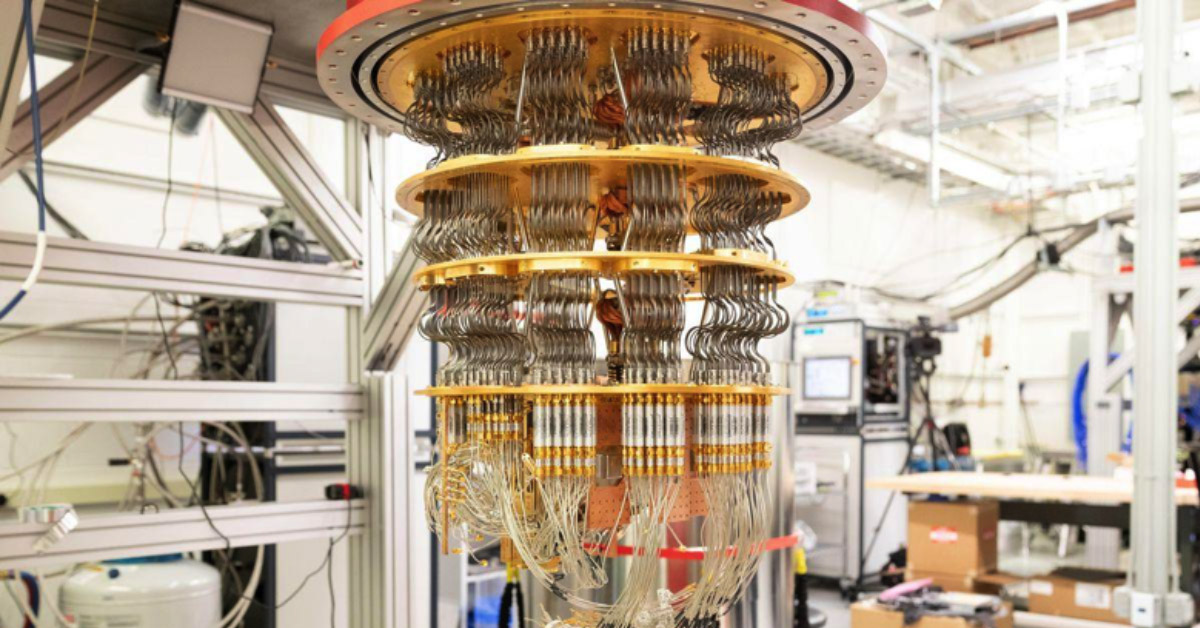Google is charging full steam ahead in its quest for quantum computing supremacy.
Announced in the 2021 Google I/O, the company is aiming to build a practical, error-corrected quantum computer by 2029.
Quantum computing, a next-gen computer architecture that conforms to the rules of quantum – rather than classical – mechanics, opens up doors to the possibility of unimaginable densities of information to be both stored and manipulated, completely shifting the landscape of computing as we know it.
The Google quantum AI campus.
To develop the technology, Google unveiled its impressive quantum AI campus in Santa Barbara, housing a quantum data center, quantum hardware research labs, and quantum processor chip fabrication facilities.
Check out this cool interactive website to discover and learn more about the main components at the campus.
The campus will be home to Google’s ambitiously planned 1,000,000 qubit quantum computer, which will undoubtedly accelerate solutions for some of humanity’s most pressing problems.
It’s a giant leap from Google’s present quantum technology. Just a year and a half ago Google claimed quantum supremacy when its 53-qubit Sycamore processor completed a calculation in 200 seconds that would have taken the world’s most powerful supercomputer 10,000 years.
Quantum computing can achieve what classical computers cannot – build highly efficient batteries, formulate carbon-free fertilisers, create more targeted medicines, unlock intelligent AI – by harnessing the power of qubits.
Ministry of magic in the computing realm.
Qubits – unlike its classical counterparts which store data as either 0s or 1s – take advantage of the quantum phenomenon known as superposition. And like wizardry, superposition allows qubits to exist as 0s and 1s concurrently.
But what’s so special about this weird state of computing?
Computing using qubits means that you can exponentially increase the amount of data and information you can process. A pair of qubits, existing as either 0s or 1s, can embody four possible states. Three qubits can embody eight. With three hundred, they can embody more states than there are atoms in the Universe. Now imagine what you can do with a million!
With this powerful surge of processing power, scientists can simulate molecules, and hence nature, more accurately than ever before.
A long, challenging road ahead.
Plenty of groundwork still has to be done by the quantum team at Google.
In their multi-stage process, all the errors qubits make must be eliminated before they can put about 1,000 physical qubits together to form a single logical, functional qubit that can keep track of its data.
Then they’ll need 1,000 of those logical qubits, otherwise known as “quantum transistors”, to get real computing work done.
It’s a long way to go, but they are definitely on the right track. All the best to team Google in their journey towards realising humanity’s quantum dream.




































